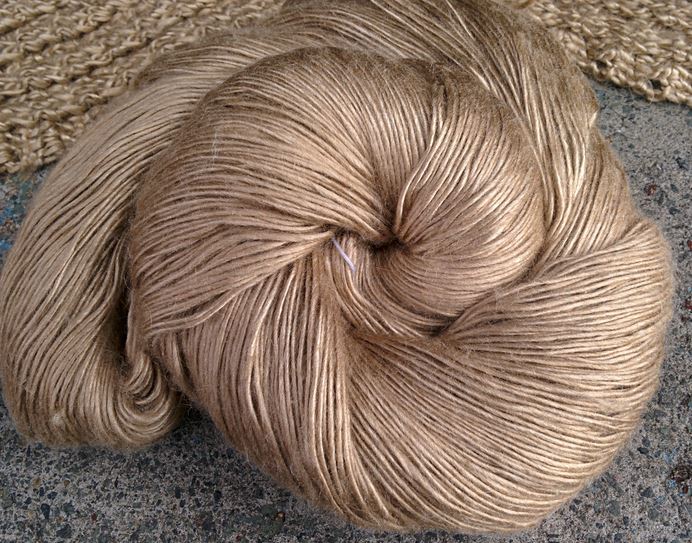Kritika Sharma

Livelihood generation is one of the major potentials of sericulture and silk industry. Sericulture has emerged as the most important cash crop with minimum investment, low gestation period, high employment potential and highly remunerative return. It is an agro-based industry which plays a vital role in the improvement of the rural economy. Silk insects other than mulberry silk insects are called non-mulberry silk insects. As they are reared outdoors in wild, they are also known as wild silk insects. India has the unique distinction of being only country in the world producing all the five commercially exploited silk varieties, namely, mulberry and non- mulberry viz., tropical tasar, oak tasar, eri and muga. Among the four varieties of silk produced in 2018-19, Mulberry accounted for 71.45% (25,345 MT), Tasar 8.4% (2,981 MT), Eri 19.48% (6,910 MT) and Muga 0.66% (233 MT) of the total raw silk production of 35,468 MT. During the year 2018-19, vanya silk production in the country is 10124 MTs which has achieved 2.9% growth over the previous year. Globally, India is the second largest producer of silk and contributes about 15.5 % to the total world raw silk production and generates employment to 6.8 million rural people mostly women folk.
The vanya silk cultivation is an eco friendly and women friendly occupation that provides high employment, vibrancy to village economies and ideal for weaker section of society. Vanya sericulture remained obscure for a long time as an exclusive craft of tribal and hill folks inhabiting the Central and North Eastern India. In Non-mulberry sericulture, Tasar, Oak Tasar and Muga culture are based largely on forest trees and practice of outdoor rearing whereas Eri thrives mainly on castor leaves, a cultivable agricultural crop and the practice of indoor rearing. Central Silk Board, Government of India has branded the vanya silk and symbol is registered as trademark. It depicts a very unique concept of Indian-ness personified by the calligraphic Devanagari letter ‘Va' crafted with bold brush strokes inside a cocoon. These symbolize multiple strands of silk. The term “Vanya” is of Sanskrit origin, meaning untamed, wild, or forest based Vanya! – the wild silks of India.
Antheraea mylitta Drury is a sericigenous semi-domesticated, tropical tasar silkworm, distributed all over India. It is exploited commercially for production of tasar raw silk. Tasar silkworm is polyphagous, feeding primarily on Terminalia tomentosa, Terminalia arjuna and Shorea robusta and secondarily on more than two dozen of food plant species. Mention of tasar silk in ancient epic Ramayana “Ram's nuptial gift to Sita . The word tasar, apparently derives from the Sanskrit word Trasara {shuttle}.Tasar silk is mentioned in literature dating back to 1590 BC.
Eri silkworm, Samia cynthia ricini, is the one among the commercially exploited silkworm species and can be reared indoors throughout the year to produce silk depending on the availability of suitable host plant. The word eri means castor, is derived from the word “eranda” of Sanskrit origin. The Britishers called it as “Palma Christi” silk. Eri silkworm is a polyphagus insect and feeds on the leaves of several food plants viz., Castor (Ricinus communis L.), Tapioca (Manihot esculenta Crantz), Papaya (Carica papaya L.), Kesseru (Heteropanax fragrans Seem), etc. Although, eri silkworm is known to feed on the leaves of more than 30 host plant species, castor is considered as the principle host plant.
Muga silkworm (Antheraea assamensis W.) is a polyphagus insect that feeds primarly on two host plants viz., Som and Soalu. The muga silkworm is semi- domesticated and is unique in this world for its golden yellow silk which is exclusively produced in Assam. Muga was made known to the World during 1662 through a famous European traveller Jean Joseph Tavenier.
Non-mulberry production offers rural population an attractive source of income, arrest their migration to urban areas, thereby preserving their traditional skill and way of life. Vanya silk culture is neither detrimental to the food plants available in forests, nor disturbing the forest ecology. When Vanya silkworms are reared on the food plants, they feed on the leaves and the litters spread in and around the plant, resulting in effective nutrient recycling. In recent times, Vanya silks have assumed more importance in view of the scope for the transformation of this age- old tradition into industry with immense potential. The country has rich natural resources and manpower and the challenge is to utilize these to bring about a balanced development without much disturbance to the forest ecology, traditional culture and the way of the way of life of the primary producers.
However, continuous deforestation resulted in depletion of non-mulberry food plants. One should not forget that non-mulberry sericulture holds great promise for the world forestry as a supplementary activity. Being forest based, the wild silkworms contribute to the development of sustainable natural environment Non-mulberry sericulture holds great promise for the world forestry as a supplementary activity. Being forest based, the wild silkworms contribute to the development of sustainable natural environment. Conservation of forest biodiversity essentially requires community involvement, especially tribals, because of their close association and treasured forest tradition.
Hence, a collaboration approach should be followed by the national agencies and regional bodies/ state government for policy, planning, Research & Development for vanya silk and forestry to cover biodiversity in a general and seri-biodiversity in particular with an objective of poverty alleviation and sustainable socio-economic development.
The author is a PG Scholar from Jammu Tawi.




